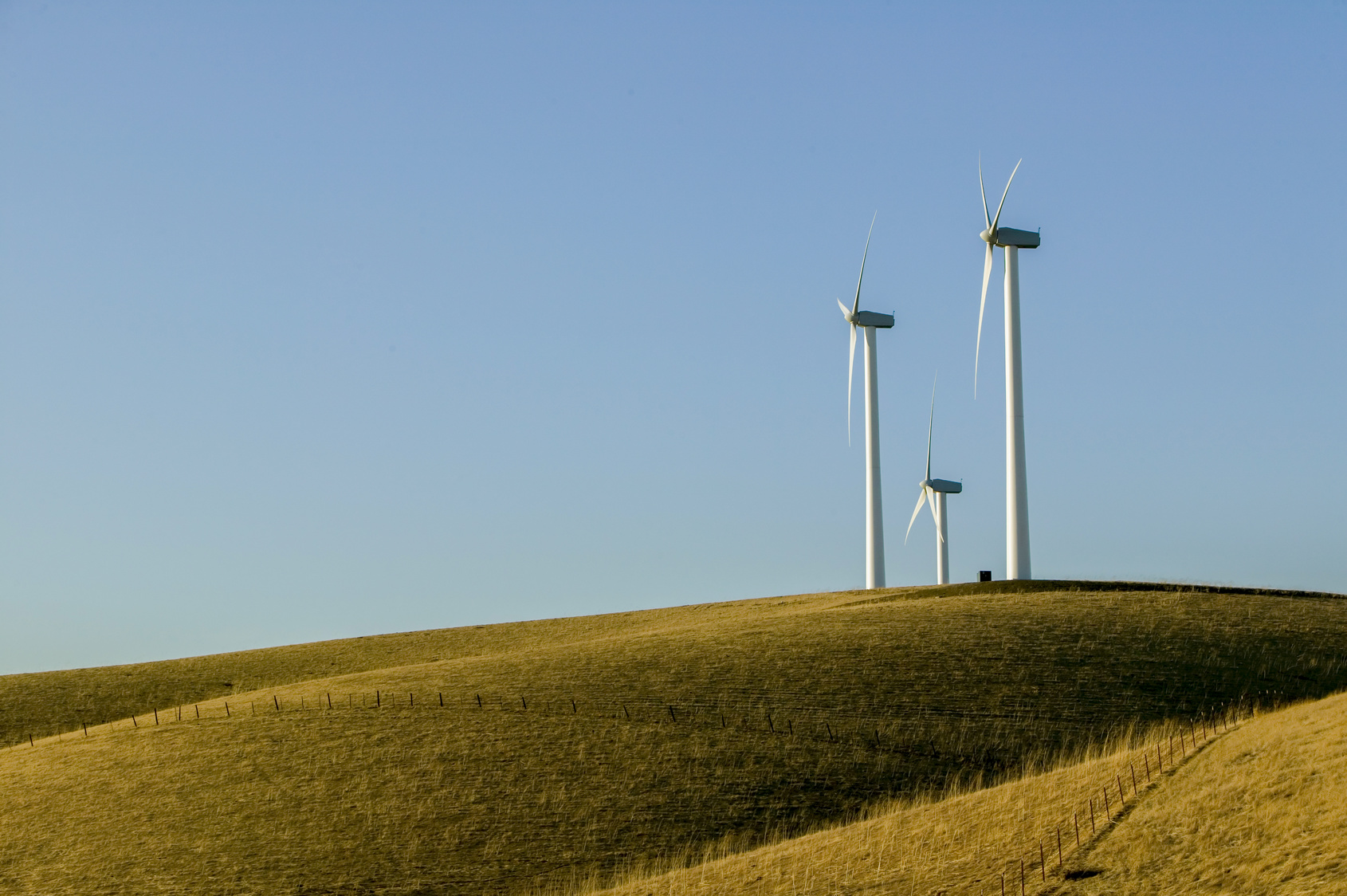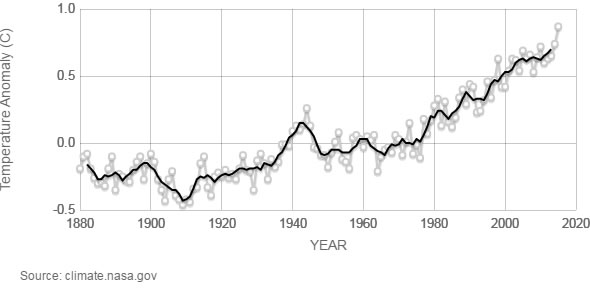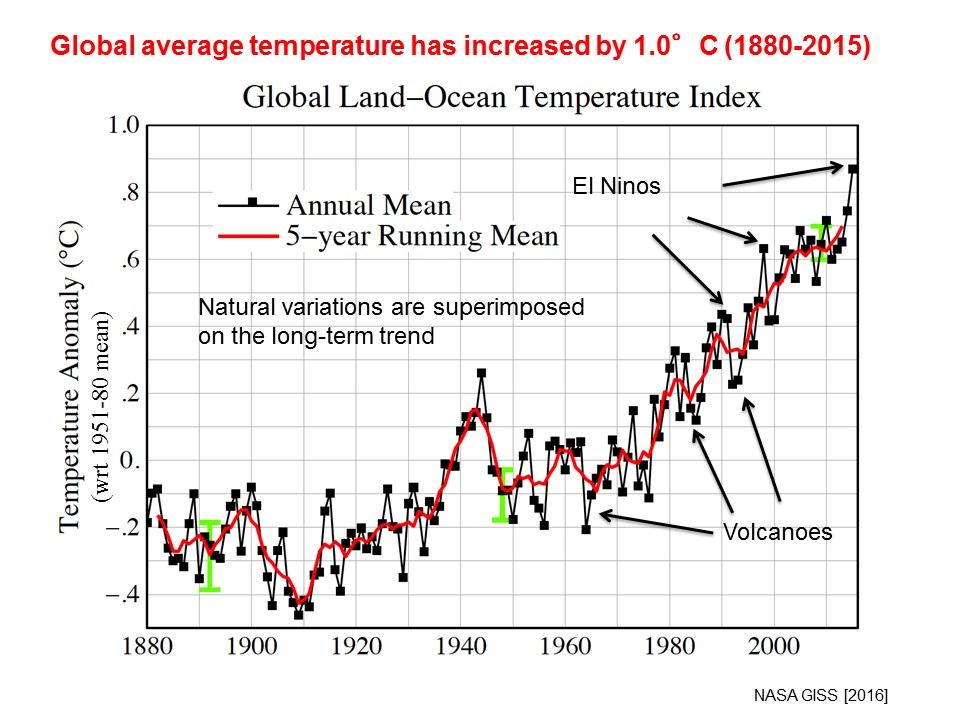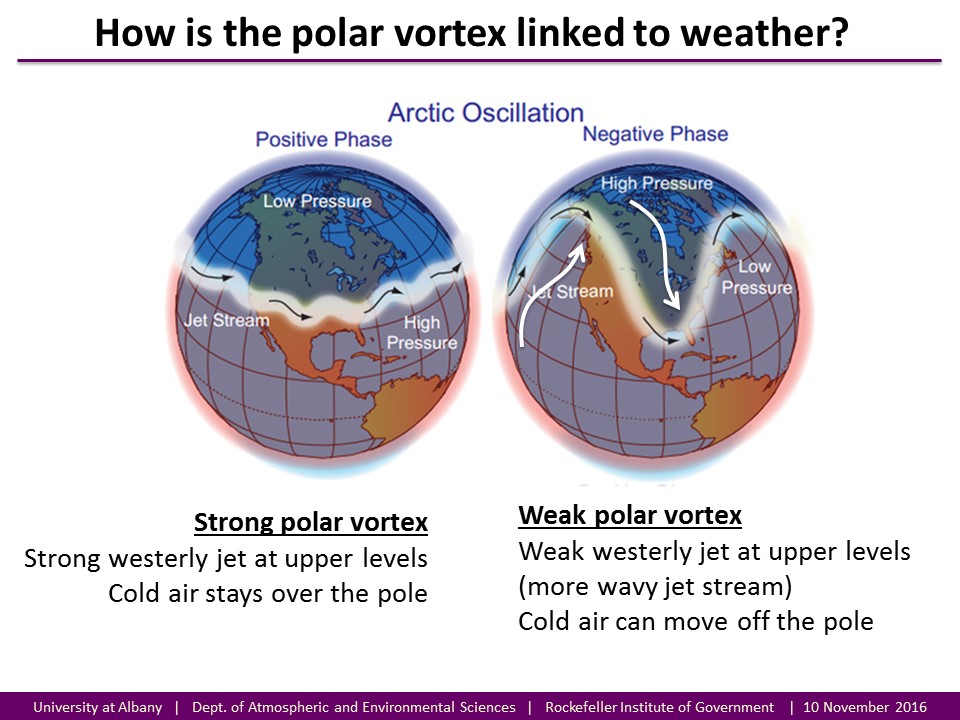“Everybody complains about the weather, but nobody does anything about it.”
For over a century, this comment has served as the standard retort when a friend or colleague laments hot and humid weather or complains about a massive snow storm. But when University at Albany Interim President James R. Stellar uses it to talk about work at UAlbany’s Department of Atmospheric and Environmental Studies (DAES), he’s not grumbling. He uses it as a setup line before he talks about what he, his colleagues, and many others in academia are actually doing about the weather as the world wrestles with persistent climate change caused by humans.
Christopher Thorncroft, a UAlbany professor and DAES chair, is an ardent advocate for steering away from the political and news media musings that often cast climate change as some sort of “50-50” proposition that casually, and inaccurately, describes consensus on the topic. The actual worldwide consensus among scientists and experts, he says, is 97 percent believe and understand that climate change is real, it’s caused by us, and we need to do something now.
The challenge, he said at a recent UAlbany conference, lies in understanding why human actions are causing the relentless warming of our planet. Next is helping the public understand what is happening — hopefully leading to greater adoption of efforts to, for example, reduce the emission of greenhouse gasses by burning fewer oil-based fuels.
What often gets in the way, Thorncroft says, are short-term variations of colder weather that embolden climate-change naysayers. The key, he says, is generating awareness and understanding of those variations, how they have been occurring for centuries, and how they will continue despite the persistent, longer-term trend of warmer temperatures.
The November 10th presentations by Thorncroft and two of his UAlbany colleagues — Assistant Professor Andrea Lang and Associate Professor Paul Roundy — focused on three areas that help us understand natural events that are often misinterpreted as reversing global warming.
Natural Variations (or, One Cold, Snowy Winter Doesn’t Mean Climate Change Isn’t Real)
Natural occurrences of cold weather that cause some to doubt the overall trend of warming temperatures hit home for me the day my wife and I stood on the deck of a cruise ship watching Marjerie Glacier calve into the chilly waters of Alaska’s pristine Glacier Bay. A National Park expert speaking over the ship’s PA system described how this particular glacier had been damaged by lower snowfalls and warmer temps. Instead of one long sheet of slowly moving ice, he said, it was now a series of connected, smaller glaciers. Many other glaciers, he also said, were much smaller and struggling to remain frozen. Yet a cranky, elderly gentleman standing next to me missed the point. If Al Gore were here, he said as he gaped at the massive ice wall, he’d take a shard of ice and insert it somewhere in Al Gore’s backside, proving that once and for all the global warming brought on by climate change was not an inconvenient truth. That man is not alone in a world full of climate-change deniers.
Thorncroft builds his conclusions on evidence-based practices. The year 2015 finished with the warmest temperatures ever recorded. In fact, he told the large crowd, the top 10 warmest years since the 1880s have been the last 10 years — with the exception of 1998.
The year 1998 and some other exceptions to the warming trend underscore the natural variability in the results we see. But they don’t deter from the alarming, overall trend of spiking temps caused by rising levels of the greenhouse gas carbon dioxide — which has occurred in synch with the rising temps.
The chart below, from our friends at NASA, helps illustrate the point. The dark line from left to right tracks deviations from average global temps over five-year periods. The “empty” circles above and below the line are shorter, annual mean temp recordings. Thus, you can see the variations Thorncroft mentioned and the general, overall spike upward.
Thorncroft and other scientists are always asked what causes these variations. Among the answers, he says, are naturally occurring phenomena like massive volcanic eruptions. Take Mount Pinatubo in the Philippines. When its cataclysmic eruption happened in 1991, tons of material was spewed into the atmosphere. Some of the ash reached as high as 22 miles and was carried over a wide area by high-level winds. The subsequent blocking of solar radiation, he explains, temporarily cooled areas of the planet, leading to short-term halts or even reductions in climbing global temps.
Here’s basically the same chart as before, but Thorncroft has added when the natural variations occurred, and why. (More on El Nino in a bit.)
In addition to natural variations and overall warming temps, what worries Thorncroft is the increasing intensity of routine weather events such as rainstorms. Since 1958, he says, scientists have recorded a 74 percent increase in “intense rainfall” activity. Many of the storms we’re witnessing now are more extreme because of higher temps. He likens the situation to baseball players who use steroids. The storm systems are stronger and last longer because they are fueled by artificial human actions.
“We have to understand that this is what’s happening — and we have to be prepared to deal with these extreme weather events,” he said near the end of his talk.
If the overall trend persists, Thorncroft concludes, the temperatures and overall climate in New York will become more like Georgia, and potentially even warmer.
El Nino (or, It’s Been Around Since the Dinosaurs)
Put simply, Professor Roundy says, El Nino is the periodic warming of equatorial and Pacific Ocean waters, which — when combined with the Earth’s rotation — disrupts the normal flow of the atmosphere. The result is the transfer of heat from ocean waters into the atmosphere, blowing more warm Pacific air into the western United States and beyond, leading to warmer temps.
The winter of 2015-16, he suggests, was milder (featuring 70 degrees here last Christmas Eve) due to El Nino, reversing the trend we experienced during the long, cold, snowy winter of 2014-15. He and other scientists are already seeing evidence of colder Pacific water emerging, so they expect this coming winter here will be colder, but nowhere near as bad as two winters ago.
This pattern — or oscillation — of warming and cooling ocean waters (known as La Nina), Roundy says, has been around since dinosaurs roamed the globe. Yet every time we experience a harsh, cold winter, many people think global warming has stopped. No, he explains, it’s just the normal ebb and flow of ocean temps that naturally disrupt normal weather patterns.
The Polar Vortex (It’s Not New; Even Al Roker Says So)
As the harsh winter of 2014-15 battered the Northeast, many of us began hearing about a new weather phenomenon called the polar vortex. It was, we thought, something novel that directly caused our terrible winter. We were half right.
According to Professor Lang, the term polar vortex term has been used by meteorologists for over a half century. Her conference presentation even included a 2014 tweet from NBC weatherman Al Roker, explaining that the National Weather Service has used the phrase as far back as 1959. He was responding to accusations that the news media had created the term to add pizzazz to explanations about and reporting on the winter of 2014-15.
What we really need to be concerned about, she says, is how changes in the vortex can alter our normal weather patterns. The polar vortex is a naturally occurring, large-scale circulation of air above and around the North Pole and surrounding region. It generally forms during the winter as the axis of the Earth tilts the northern hemisphere (us) away from the sun. This tilt causes generally cooler temps (otherwise known as winter) because solar radiation passes through much more of the atmosphere before it reaches the ground. Changes in the strength of the vortex can affect our climate.
Generally speaking, when polar vortex winds are strong, they help keep the colder air over the pole. Weaker polar vortex winds (or a “wavier” pattern) allow “dips” in the circulatory pattern, resulting in the spread of colder air south of the North Pole. This is, she explains, what happened two winters ago when a weaker polar vortex allowed more colder air than normal to escape south. In 2015 to 2016, she adds, the warmer weather was aided by a stronger vortex that helped keep colder air up north.
One chart from Lang’s presentation shows us how a “wavier” polar vortex pattern (on the right) allows that chillier arctic air to temporarily move south.
By tracking changes in the strength of polar vortex winds, she adds, scientists and meteorologists can make better projections about winter weather up to 90 days in the future. What bears further study are the reasons for the year-to-year variations in strong vs. weak polar vortex winds.
The point, she and her colleagues emphasize, is that El Nino/La Nina, polar vortex changes, and natural events like volcanic explosions have existed for a long time. They will always cause variations in weather — despite and during the overall, relentless elevation of temps by human-caused increases in atmospheric carbon dioxide.
Where Do We Go From Here?
The evidence supporting climate change is stark. According to NASA, sea levels (from melting polar ice sheets and glaciers) are close to seven inches higher today than they were last century. Global temps are higher. The level of greenhouse gas carbon dioxide in the atmosphere has crossed the critical 400 parts per million threshold for the first time ever. Oceans are warmer. The overall snow cover across the planet has decreased. There are many other factors that support the conclusions of over 97 percent of scientists.
And the answers seem simple, but they are of course politically and economically unpopular: Burn fewer fuels based on hydrocarbons, expand the use of alternate energy sources such as wind and solar, and simply use less energy. All help reduce the emission of more carbon dioxide into the atmosphere. Another solution involves fighting mass-scale deforestation. As we know from high school science, the process of photosynthesis has plants giving off oxygen as they soak up carbon dioxide. Fewer trees in our forests means a smaller “carbon sink” that can help remove some carbon dioxide from the atmosphere.
These are physical solutions that require some sacrifice. As a lifelong student of communication, I think another key factor is awareness and understanding. Great conferences (like the November 10 event I attended at UAlbany, jointly sponsored by UAlbany and Rockefeller Institute of Government) are important means by which more of our population can gain greater understanding of what is happening. The result, hopefully, is dragging the climate change discussion further away from the political arena and more into a world where acceptance of environmental issues becomes as common and important as taking care of one’s health.
Otherwise, as my attempt at humor in my first headline suggests, owners of waterfront property who bought their homes during times of normal sea levels may face selling them — for a lot less — as sea levels rise.




